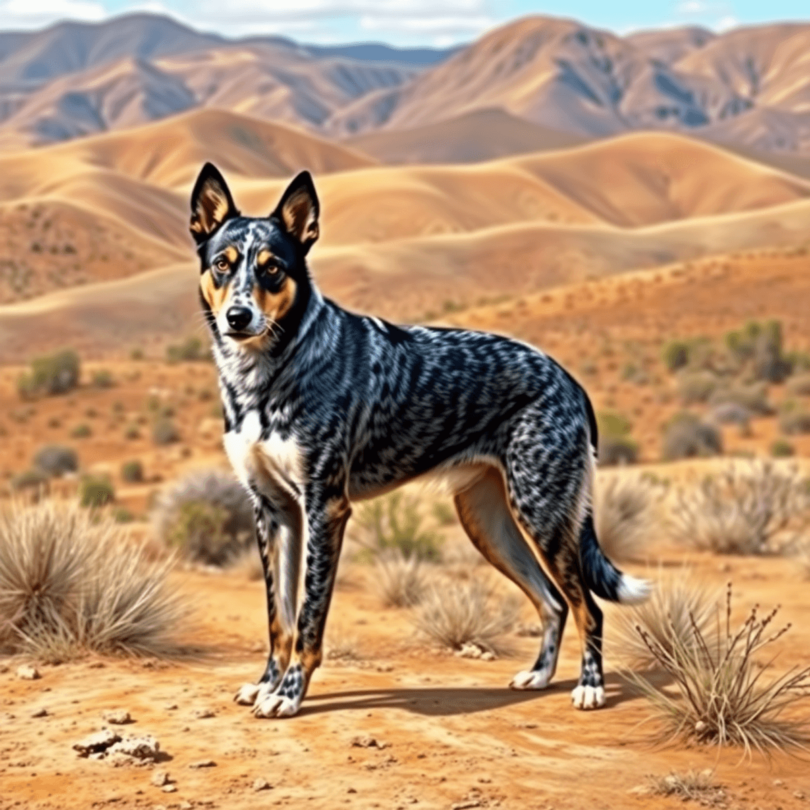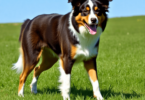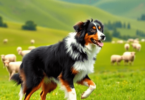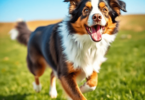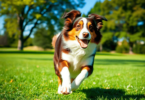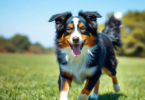A Deep Dive Into Australian Cattle Dog History
The Australian Cattle Dog (ACD), also known as the Blue Heeler, has a rich history that is deeply connected to Australian culture. This breed was developed in the 19th century and played a crucial role in herding cattle across the rugged Outback. Here are some fascinating aspects of their history:
- Intelligent and tenacious, ACDs were specifically bred to thrive in harsh environments.
- Their unique ancestry includes crossbreeding with Dingoes and blue merle Collies, resulting in dogs that are skilled at navigating challenging terrains.
Understanding the history of this remarkable breed is important for potential owners. It not only sheds light on their distinctive traits but also helps them make informed decisions about care, training, and lifestyle. The legacy of the Australian Cattle Dog lives on, serving as a reminder of its significance in the history of Australian working dogs.
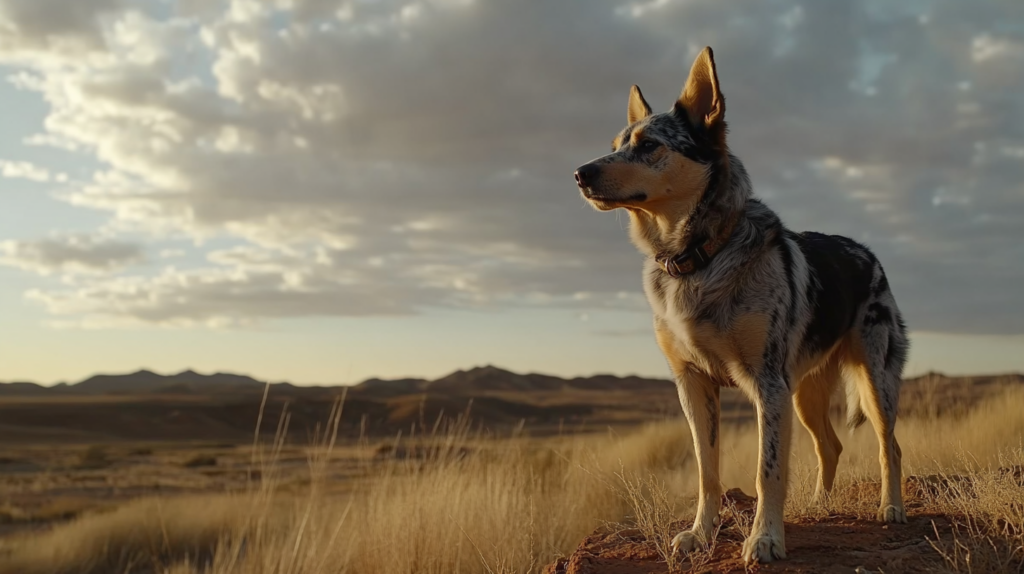
1. The Origins of the Australian Cattle Dog
The fascinating journey of the Australian Cattle Dog (ACD) begins in the rugged terrains of Australia during the 1840s. This breed was born out of necessity, aimed at creating a hardy herding dog that could withstand the harsh conditions of the Outback.
George Elliott’s Vision
Enter George Elliott, a visionary who realized the need for a reliable herding companion to assist in managing cattle over vast distances. His initial breeding efforts laid the foundation for what would become the Australian Cattle Dog. With an eye for resilience and capability, Elliott sought to combine traits from various breeds to produce a dog that could thrive in demanding environments.
- Crossbreeding was key to his strategy.
- He began with Dingoes, Australia’s native wild dogs, known for their adaptability and stamina.
- To enhance their herding instincts and physical prowess, he crossed them with blue merle Collies.
This combination not only produced dogs adept at herding but also contributed to the ACD’s unique appearance, characterized by its sturdy build and striking coat patterns.

The Influence of Thomas Hall
As time passed, other breeders recognized the potential of this remarkable dog. Among them was Thomas Hall, who played a crucial role in refining what we now know as Hall’s Heeler or Queensland Heeler.
- Hall focused on enhancing desirable traits while establishing breed standards.
- His contributions included careful selection and breeding practices aimed at improving temperament and working abilities.
The result? A more consistent breed that excelled in its herding duties while also developing a strong bond with its human companions.

Dingo Cattle Dog Ancestry
The interplay between Dingoes and domestic breeds created a dog like no other. The Dingo cattle dog ancestry is evident in several aspects:
- Physical Attributes: Their medium-sized, robust frame catered perfectly to their herding role, enabling agility and endurance.
- Intelligence: ACDs are known for their sharp minds, often attributed to their wild Dingo lineage which fosters independence and problem-solving skills.
The early days saw these dogs being put through rigorous tasks on ranches across Australia, where they quickly gained recognition for their versatility.
A combination of hard work, keen instincts, and adaptability solidified the Australian Cattle Dog’s reputation as one of Australia’s most beloved breeds. As breeders like George Elliott and Thomas Hall continued to refine these remarkable canines, the stage was set for their evolution into one of the most reliable working dogs not just in herding but across various roles as well.
With roots deeply embedded in both practicality and heritage, the Australian Cattle Dog stands as a testament to resilience—a true reflection of its environment and purpose.
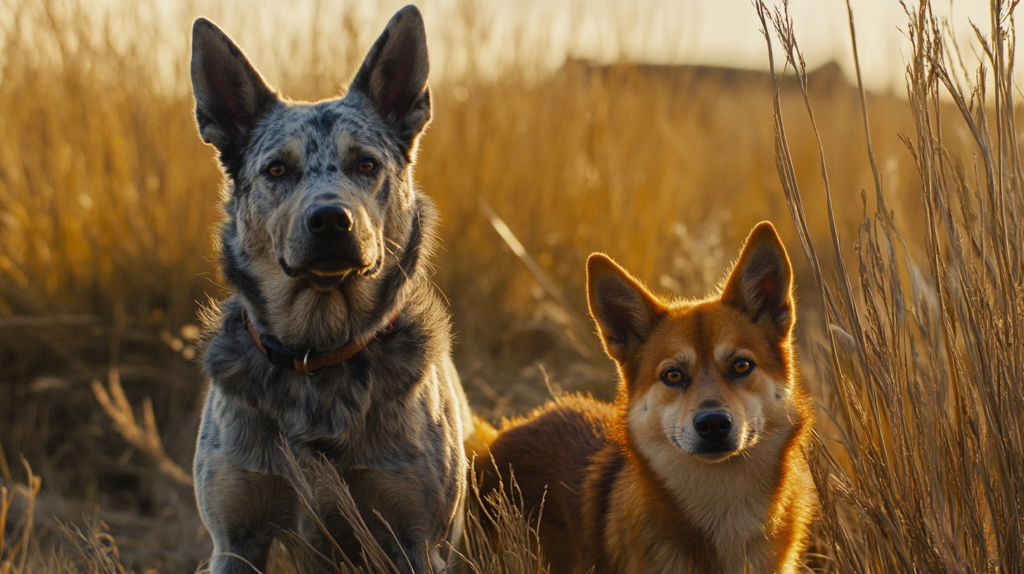
2. Development Through Breeding Programs
The evolution of the Australian Cattle Dog took a significant leap forward thanks to the dedicated efforts of prominent breeders.
Thomas Hall and His Contributions
Thomas Hall emerged as a key figure in the breed’s development during the late 19th century. He focused on refining what would later be known as Hall’s Heelers, aiming to establish a breed standard that highlighted their unique herding abilities and physical traits. Hall’s work was pivotal in shaping the dog’s temperament, ensuring they were not only skilled workers but also loyal companions.
The Bagust Brothers’ Influence
The contributions of other breeders like Jack and Harry Bagust were equally crucial in this journey. They played an instrumental role in introducing distinct color varieties to the breed. Their focus on creating red and blue speckled coats enhanced the visual appeal of these dogs while maintaining their working capabilities.
The Resulting Legacy
Thanks to these breeding programs, the Blue Heeler breed developed into a versatile working dog known for its intelligence, stamina, and adaptability. Today’s Australian Cattle Dogs owe much of their remarkable traits to these early breeding efforts, transforming them into beloved companions for active families and diligent workers across various fields.
The legacy continues as breeders today strive to enhance the breed while preserving its distinctive characteristics.
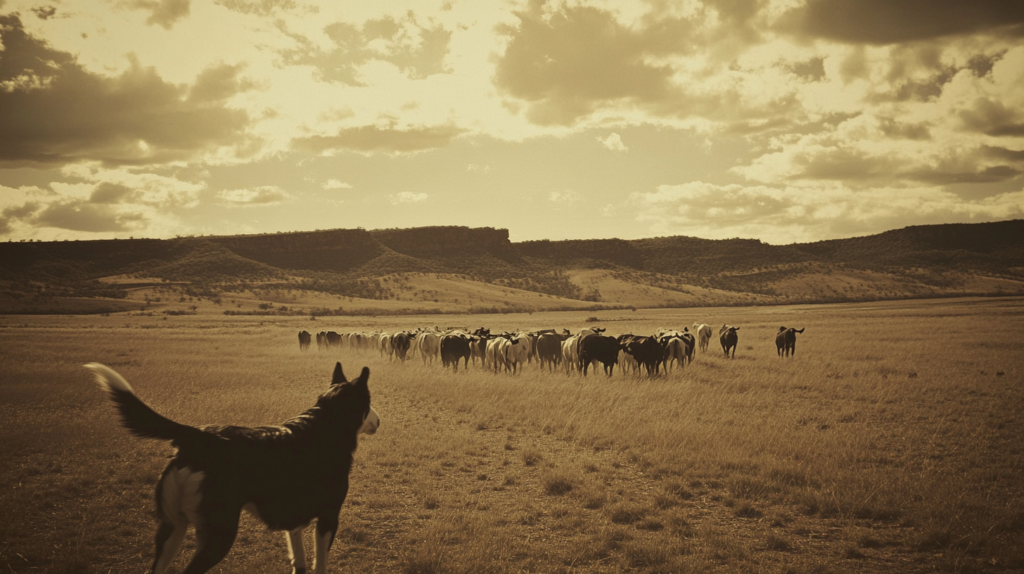
3. Recognition and Standardization by Kennel Clubs
The story of how the Australian Cattle Dog (ACD) became officially recognized is an interesting chapter in The History of Australian Cattle Dogs. The breed’s journey to acceptance began with Robert Kaleski, who played a crucial role in its development. In 1903, Kaleski established breed standards that outlined the physical and behavioral traits defining ACDs, solidifying their identity in the canine world.
Key Developments in Recognition:
- Australian National Kennel Council (ANKC): As one of the first organizations to recognize the breed, the ANKC set forth regulations that guided breeders in maintaining ACD traits.
- American Kennel Club (AKC): The AKC accepted the Australian Cattle Dog into its registry in 1980. Initially placed in the Working Group, it transitioned to the Herding Group in 1983, reflecting its herding capabilities and lineage.
Kaleski’s emphasis on breeding not only prioritized physical attributes but also temperament. His vision ensured that ACDs retained their intelligence, agility, and loyalty—qualities critical for working alongside humans in various capacities.
As ACDs gained popularity internationally, additional kennel clubs recognized them, further establishing their status as a distinct breed. This acceptance allowed for extensive documentation of breed standards across different countries, promoting responsible breeding practices. The collaborative efforts of breeders and kennel clubs laid a foundation that continues to support the growth and appreciation of this remarkable breed today.
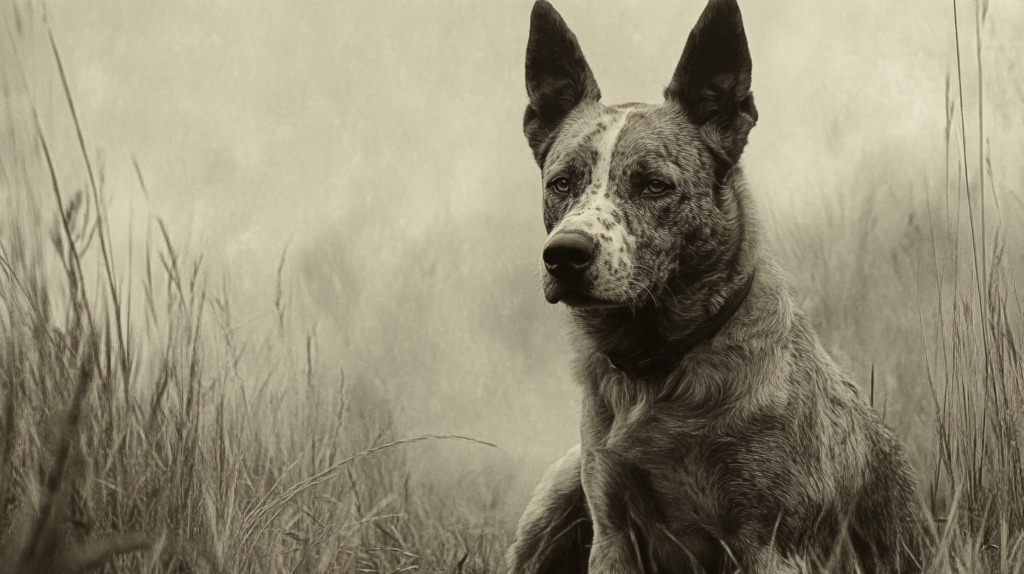
Notable ACDs in History
Australian Cattle Dogs (ACDs) have made significant contributions throughout history, leaving their mark with impressive achievements and unforgettable personalities. Here are some notable ACDs who have won hearts and made an impact on culture:
1. Bluey
Bluey holds the record for being the longest-living dog ever recorded. He worked alongside his owner for an incredible 20 years, herding cattle. Bluey’s extraordinary commitment not only made him a legend but also showcased the breed’s exceptional work ethic and resilience.
2. Bully
Bully, a famous ACD, served as a mascot for the Australian Army during World War II. His loyalty and spirit uplifted morale among troops, symbolizing strength and companionship during difficult times.
3. Misty
Misty, an accomplished ACD, became a search-and-rescue hero by playing a crucial role in locating missing persons in dense bushland. Her sharp instincts and unwavering dedication highlight the versatility of ACDs beyond their traditional herding roles.
These remarkable ACDs remind us of the breed’s intelligence, loyalty, and adaptability. Their influence goes beyond just their working abilities; they embody the very essence of Australia—combining toughness with heartwarming companionship.
As we delve into how this breed has evolved in modern times, it’s important to remember that these historical figures continue to shape how people view ACDs today and inspire future generations of owners.
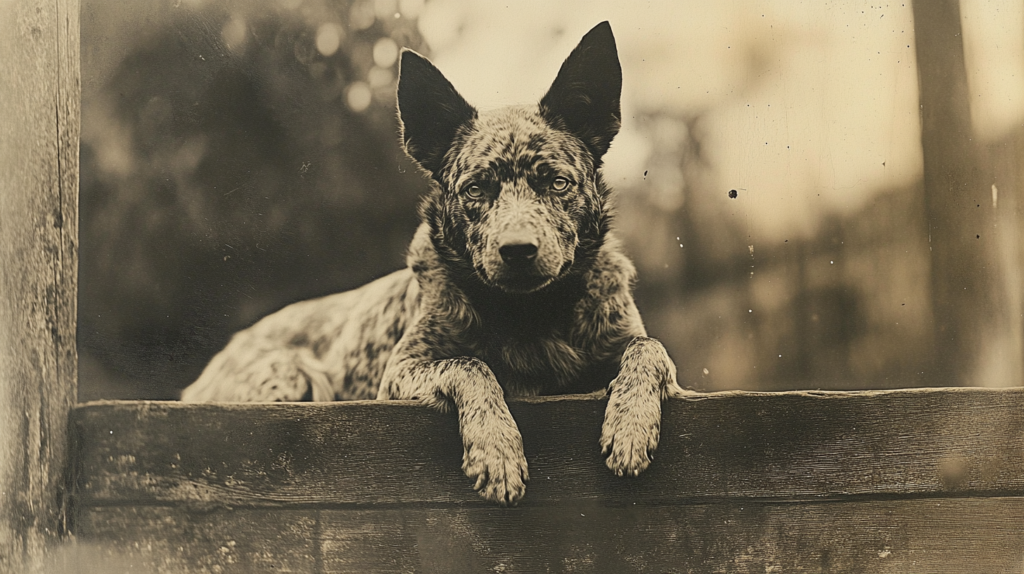
7. Versatile Working Dogs Beyond Herding Roles
Australian Cattle Dogs (ACDs) are not just herding dynamos; their history extends into various working roles that showcase their remarkable versatility. These adaptable canines have been involved in a variety of important tasks, demonstrating their intelligence and resilience.
Notable Roles Include:
- Search and Rescue: ACDs have played a vital role in search and rescue operations. Their stamina and acute sense of smell make them excellent at locating missing persons in challenging terrains, whether in the bush or urban environments.
- Assistance Animals: These dogs shine as assistance animals for individuals with disabilities. Their trainability, loyalty, and keen instincts enable them to support people in daily activities, providing both practical help and companionship.
- Therapy Animals: The gentle nature of some ACDs allows them to thrive as therapy dogs. They visit hospitals, nursing homes, and schools, offering comfort and emotional support through their affectionate demeanor.
Historical Context
The dual-purpose nature of ACDs reflects their breeding history. Originally bred for herding cattle across rugged landscapes, these dogs were naturally inclined toward various tasks that required intelligence and agility. Their ability to learn quickly makes them suitable for diverse roles in modern society.
From herding to assisting humans in need, Australian Cattle Dogs have proven time and again that they are more than just cattle companions; they are multifaceted working partners ready to tackle any challenge thrown their way.
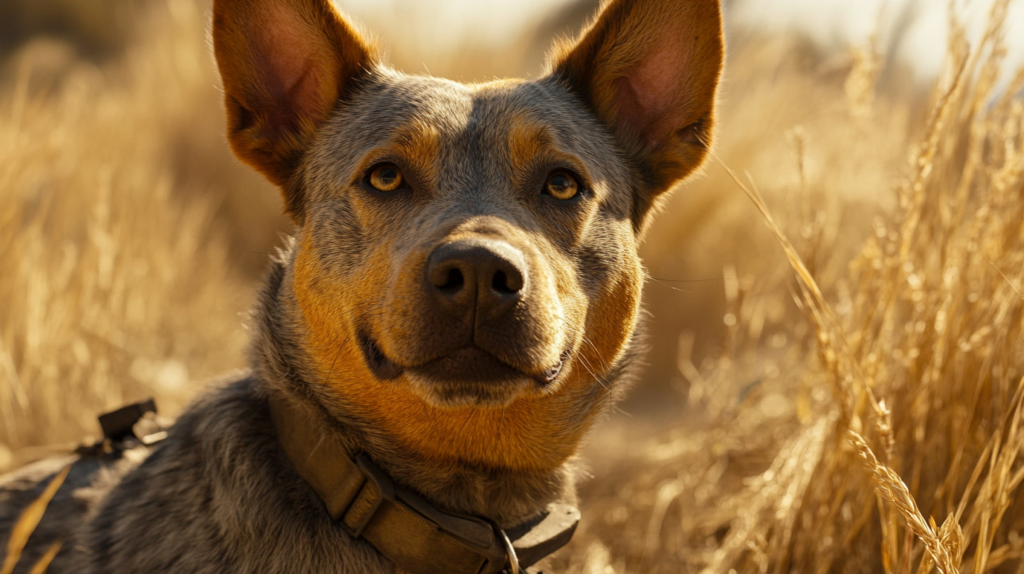
Modern Role Evolution
The Australian Cattle Dog (ACD) has expanded its repertoire far beyond herding cattle in the rugged Outback. Today, these intelligent and energetic dogs are making their mark in various roles that highlight their versatility and adaptability.
1. Service Animals
ACDs are increasingly being trained as service dogs. Their keen instincts and ability to bond with humans make them excellent companions for individuals with disabilities. From guiding visually impaired individuals to providing support for emotional needs, these dogs excel in assisting their human partners.
2. Search and Rescue
Thanks to their agility and superb tracking skills, ACDs have become invaluable assets in search and rescue operations. Their tenacity enables them to navigate challenging terrains while locating missing persons or aiding disaster recovery efforts.
3. Detection Work
The breed’s sharp sense of smell has led to its involvement in drug detection and pest control. ACDs can be trained to identify specific scents, making them effective partners in law enforcement and agricultural sectors.
4. Active Family Companions
Beyond work, ACDs thrive as active family pets. Their playful demeanor and boundless energy suit families who enjoy outdoor activities, hiking adventures, or simply playing fetch at the park.
As these remarkable dogs continue to evolve in modern society, their capabilities showcase the endless potential wrapped up in those sturdy frames and bright eyes.
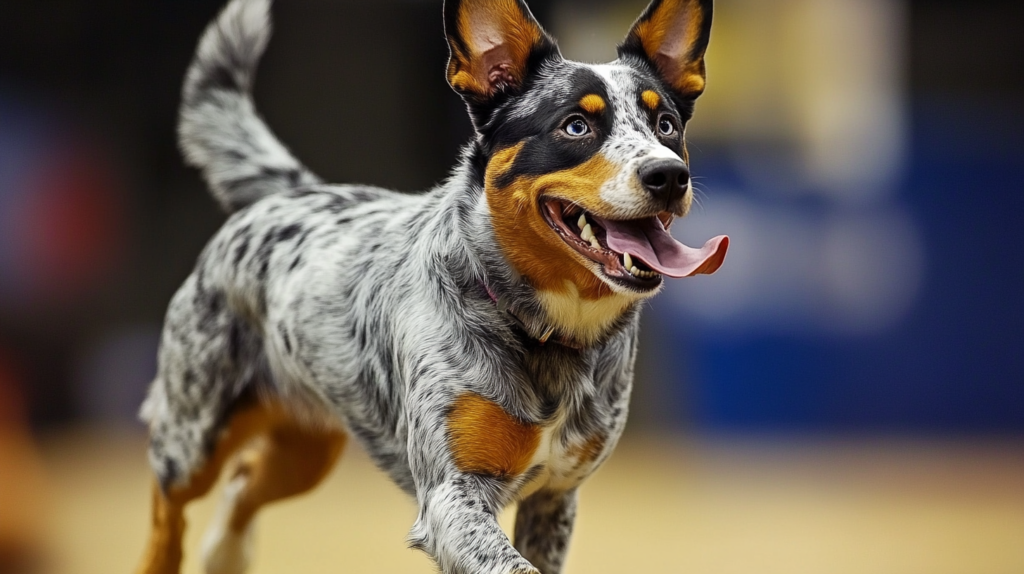
8. Lifestyle Considerations for Potential Owners
Bringing an Australian Cattle Dog (ACD) into your life is a delightful adventure! Understanding their life expectancy range is essential for any potential owner. ACDs typically live around 12 to 15 years, but several factors can influence their longevity:
Key Factors Impacting Longevity
- Nutrition: Quality dog food tailored to their specific needs can significantly enhance health. Look for a balanced diet rich in proteins, healthy fats, and essential vitamins.
- Exercise Levels: These energetic dogs thrive on activity. Regular exercise not only keeps them physically fit but also mentally stimulated. Engage them in activities like:
- Herding games
- Agility training
- Long walks or runs
- Health Check-ups: Routine veterinary visits are crucial. Regular check-ups can help spot health issues early, ensuring timely intervention.
- Socialization and Training: Early socialization and consistent training contribute to a well-adjusted dog. This helps prevent behavioral issues that could impact both their happiness and health.
Conclusion: Preserving The Legacy Of The Australian Cattle Dog Breed
Responsible ownership practices for prospective owners are vital in preserving the remarkable legacy of the Australian Cattle Dog. These spirited companions thrive when provided with:
- Regular exercise: Engaging activities keep their minds and bodies active, channeling their energy effectively.
- Socialization: Early exposure to various environments, animals, and people fosters well-rounded behavior.
- Training: Consistent, positive reinforcement-based training sharpens their intelligence and strengthens the bond between owner and dog.
Understanding The History of Australian Cattle Dogs adds depth to the connection with these dogs. Their evolution from hardy herders to beloved family members reflects a unique relationship shaped by dedication and care. By embracing responsible practices, potential owners not only enhance the lives of their ACDs but also contribute to sustaining this extraordinary breed’s heritage for future generations.
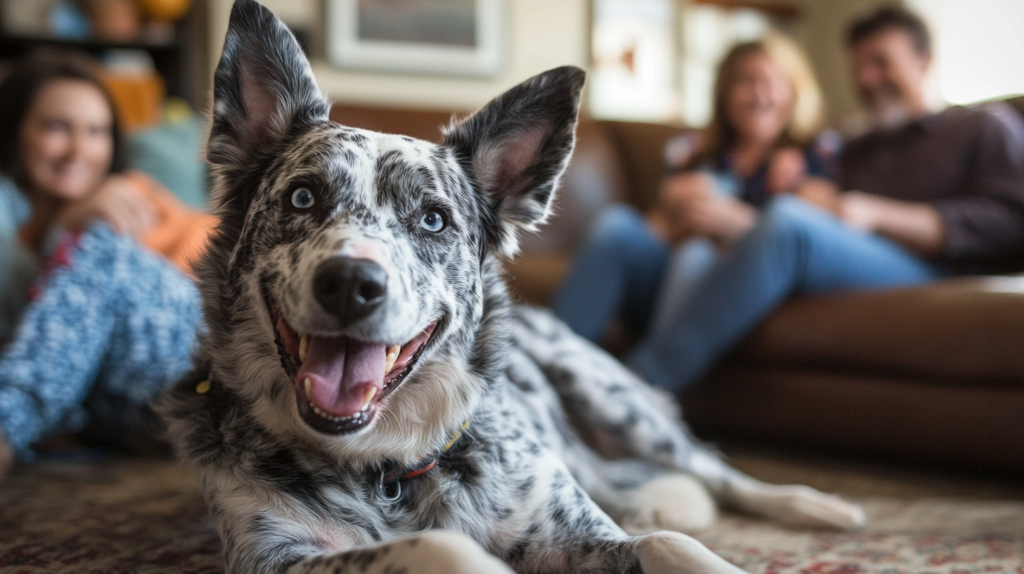
FAQs (Frequently Asked Questions)
What is the origin of the Australian Cattle Dog?
The Australian Cattle Dog originated in the 1840s when George Elliott sought to create a hardy herding dog suitable for Australia’s harsh environment. Initial breeding efforts included crossbreeding with Dingoes and blue merle Collies, contributing to the breed’s unique appearance and working abilities.
Who were the key figures in the development of the Australian Cattle Dog?
Thomas Hall was a prominent breeder who significantly contributed to refining and establishing the breed standard. Other breeders, such as Jack and Harry Bagust, played vital roles in developing distinct color varieties like red and blue speckled coats.
When was the Australian Cattle Dog officially recognized?
The breed was officially recognized by Robert Kaleski in 1903, leading to its acceptance into major kennel clubs around the world, including the Australian National Kennel Council and AKC.
What roles do Australian Cattle Dogs play beyond herding?
Australian Cattle Dogs have historically been used as versatile working dogs in various capacities, including search and rescue operations and as assistance animals for individuals with disabilities.
What is the average lifespan of an Australian Cattle Dog?
The average lifespan of an Australian Cattle Dog ranges from approximately 12 to 15 years. Factors influencing their longevity include nutrition, exercise levels, and overall care.
How can potential owners embrace responsible ownership practices for Australian Cattle Dogs?
Potential owners are encouraged to engage in responsible ownership practices that contribute to preserving the legacy of this remarkable breed. This includes proper training, socialization, regular veterinary care, and ensuring a suitable environment that meets their physical and mental needs.
